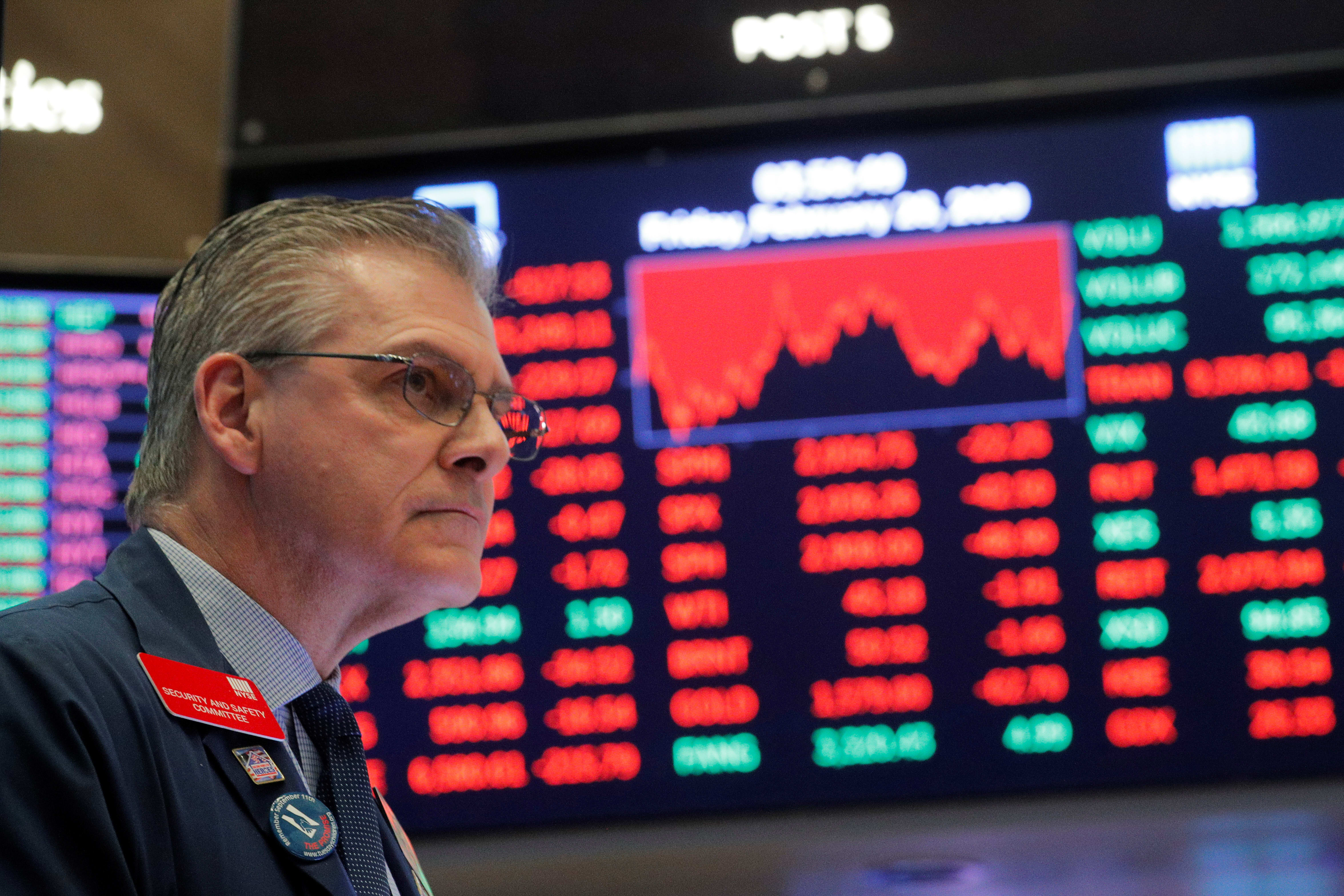
The stock market doesn’t “wait and see.”
As much as investors themselves need time to assess the economic effects of the coronavirus outbreak, the market registers the immediate shock of a derailed economic-growth outlook and then whips around madly as it shuttles among all the widely divergent outcomes.
And so, the S&P 500 — after dropping 12% to end February in the fastest such correction on record — last week went screaming in both directions, alternating quicksilver rallies with urgent selloffs in the most volatile action since the 2011 panic over a feared U.S. debt default and European credit crisis.
A week ago here, my call was that “the tape is becoming stressed and stretched in a way that tends to precede the kind of reflex rally that is sudden, powerful and probably untrustworthy.” That roughly played out, with Monday’s huge 4.6% S&P 500 rally giving way to severe chop that wore away just about all that daily gain.
Here is the S&P 500 over the past decade along with the average ten-day daily price change, plotted by SunTrust. Such violently fibrillating periods tend to occur after the initial flush lower in a correction, though often with more weakness lurking out ahead.
While such mercurial action might seem confused or irrational, it can be seen as the market relentlessly hunting for buyers and sellers with conviction about the outlook. In a time when the market’s trend buckles and the range of outcomes runs from brief pause in economic growth as the virus is contained to open-ended pandemic and recession, prices need to move farther, faster, to locate those high-conviction investors.
As Kevin Dempter, a strategist at Renaissance Macro Research, puts it, “The market has seen extreme whipsaws as it’s been desperately trying to form a new trading range.” This has been the course followed the prior times the past decade when a sudden downturn pushed the CBOE S&P 500 Volatility Index up toward 50, as it did recently.
“Extreme daily whipsaws should eventually ease as the range tightens,” he says. “In these times of extreme uncertainty, the potential for range-bound consolidation is welcomed as it at least gives investors some clarity on important market levels to help manage risk.”
In other words, in such times, sideways movement represents progress.
A flattish week in stocks with Treasury yield rushing to stunning new lows below 0.7% appears a tentative, fragile equilibrium at best. The VIX finishing the week in the 40s and gauges of credit-risk showing escalating stress by week’s end make it hard to declare the fever is passed.
The way ahead can be viewed as a series of tests:
• In the typical market-correction playbook, a significant low in the indexes, formed with a dramatic reversal, usually is tested within weeks or months. For the S&P 500, this level is around 2855, the low from the afternoon of Feb. 28, where a furious rebound rally began on heavy volume.
Ideally, a retest should return to or near that low and show less selling intensity (fewer stocks making new lows, lesser trading volume), in which case traders can start to view it as a presumed bottom. On Friday, the S&P sagged to about 2900, with a good deal less selling pressure than the week before – perhaps a sign the bears had done enough for now, if not a robust retest. In the 2011 tailspin and the early 2018 drop, a retest two months later found footing at slightly lower levels that the initial tumble.
Of course, not all retests are passed. The initial double-digit drop in 2018 from a September all-time high, stocks bounced hard and it looked like a retest setup, only to give way to a more disorderly selloff and ultimate 20% loss that December, before a furious recovery took hold.
• Wall Street also needs to be tested for resilience to the inevitable barrage of incremental coronavirus headlines – daily infection counts, cities curtailing activities, businesses restricting travel.
The market storm won’t abate when the outbreak seems contained to everyone’s satisfaction. It will be over once securities get priced to a level that reflects a serious set of outcomes and then stop responding to what everyone expects to be a widening radius of infection and business disruption.
It’s unclear this point has been reached.
• The alarming collapse in Treasury yields is also testing investors’ long-held ideas about how to value stocks. This correction began from a moment of rich valuations that were dependent on a series of positive things happening: global economic reacceleration, rebound in corporate profits and a Fed benignly holding policy steady.
Is a 12% drop from such levels enough to account for the rising possibility of flat-or-worse earnings and severe consumer retrenchment?
Investors typically argue that equity valuations can be higher when bond yields are lower. Yet with yields scraping toward zero, this math grows tenuous. Could stock valuations in Europe and Japan be infinite with yields below zero?
Or do the conditions that cause yields to approach zero mean the backdrop is inherently less friendly for corporate fortunes and stock values?
Goldman Sachs plots the so-called equity risk premium, or the gap between the earnings yield on S&P 500 (earnings divided by price) and the 10-year Treasury yield.
It now shows equities to be as attractively valued on this basis as they’ve been since 2014 or so — even more so than on the chart, now that Treasuries are below 1%. Not bad — unless this approach loses validity at the extremes of the interest-rate spectrum, and the factors driving down rates also make those earnings forecasts suspect.

